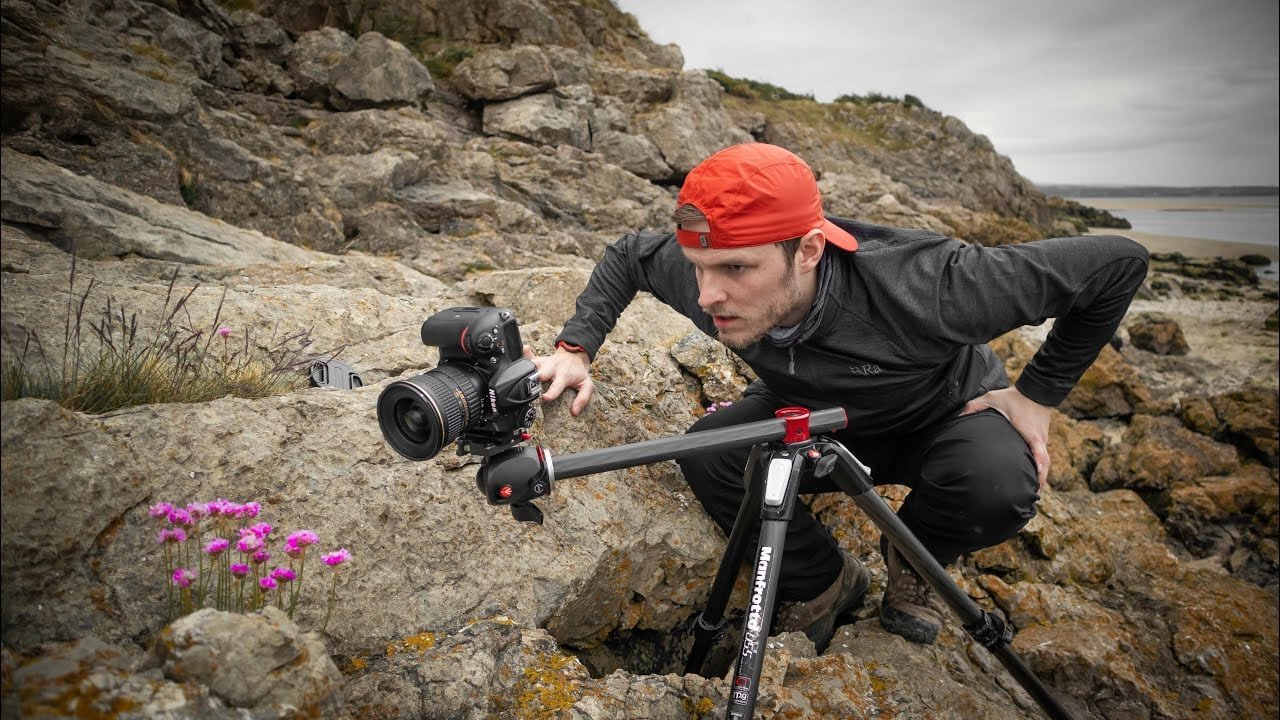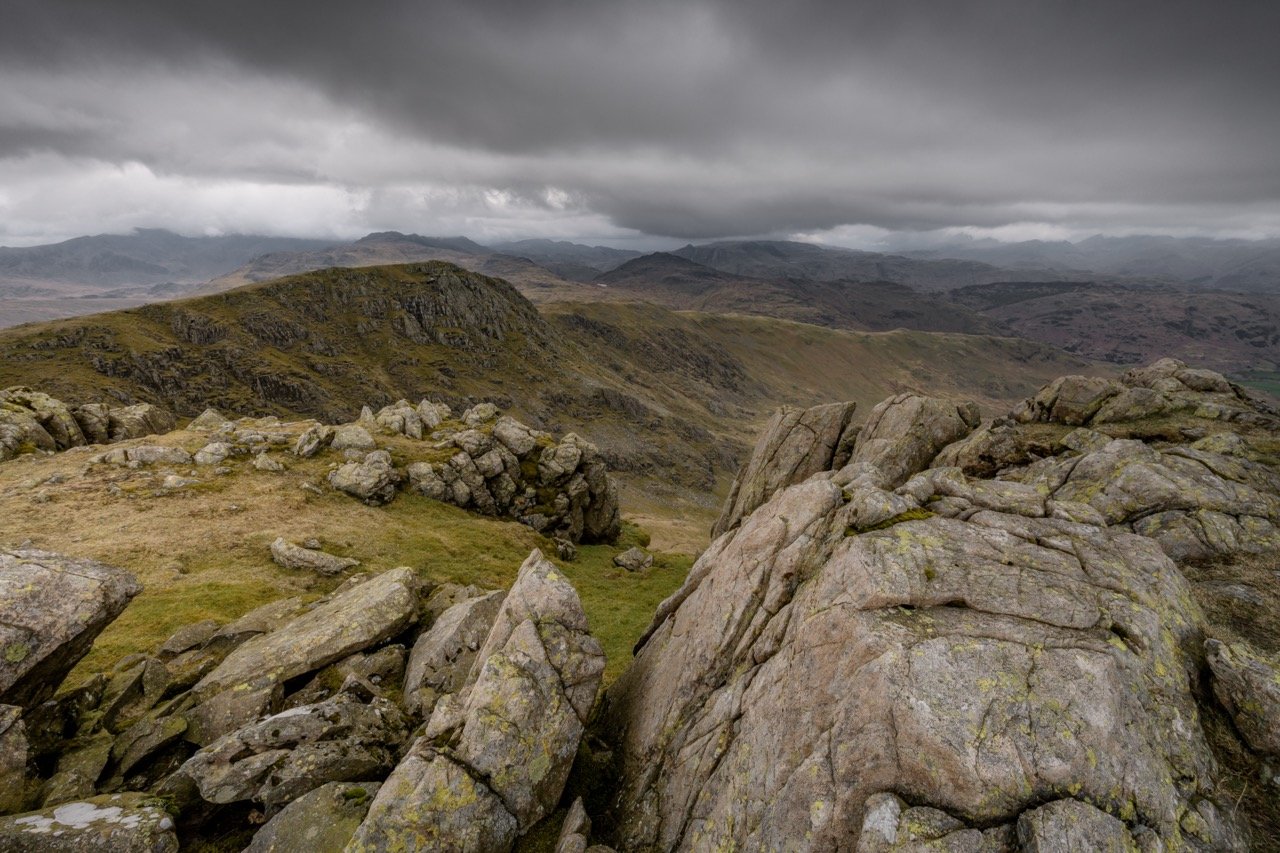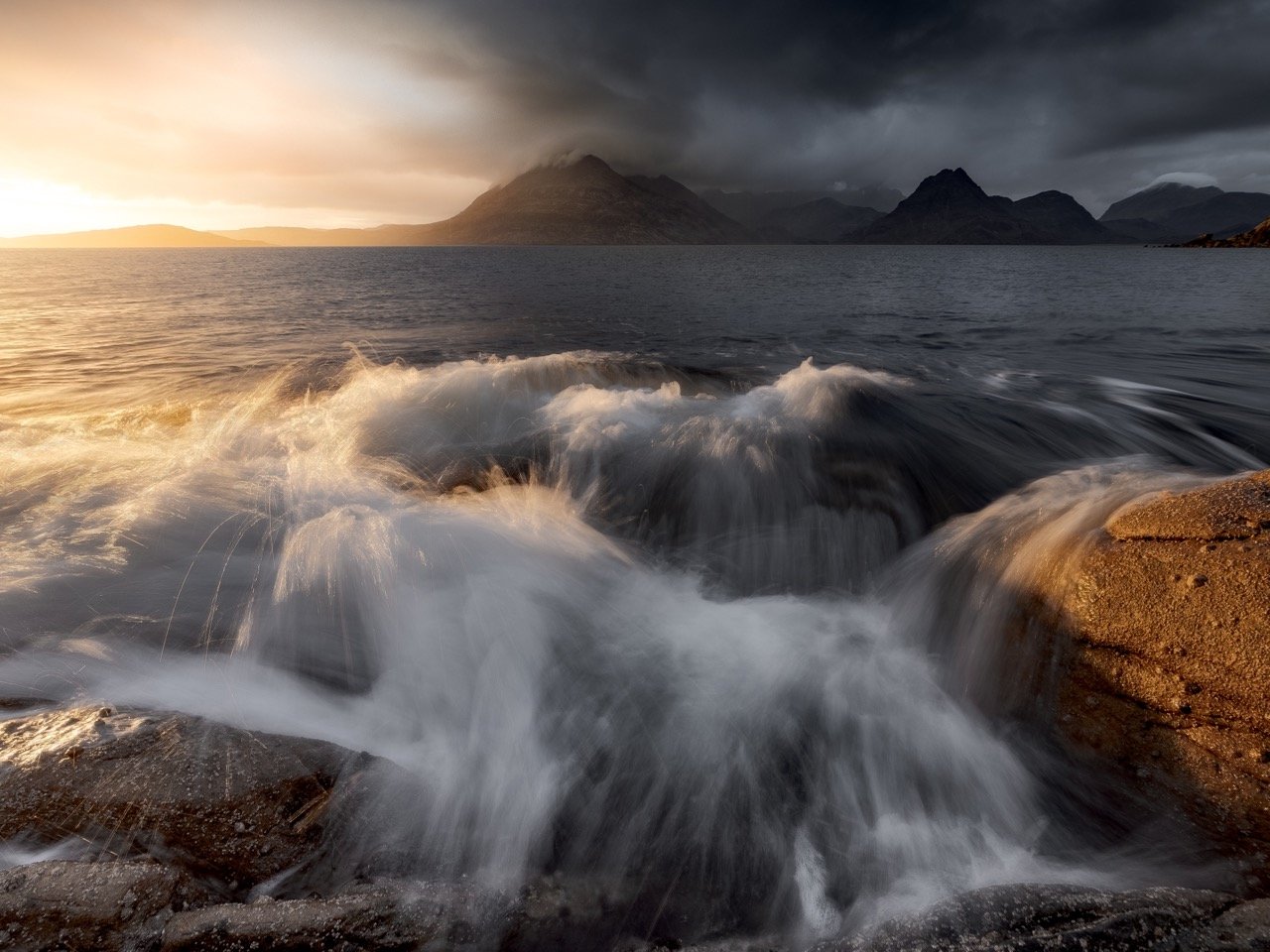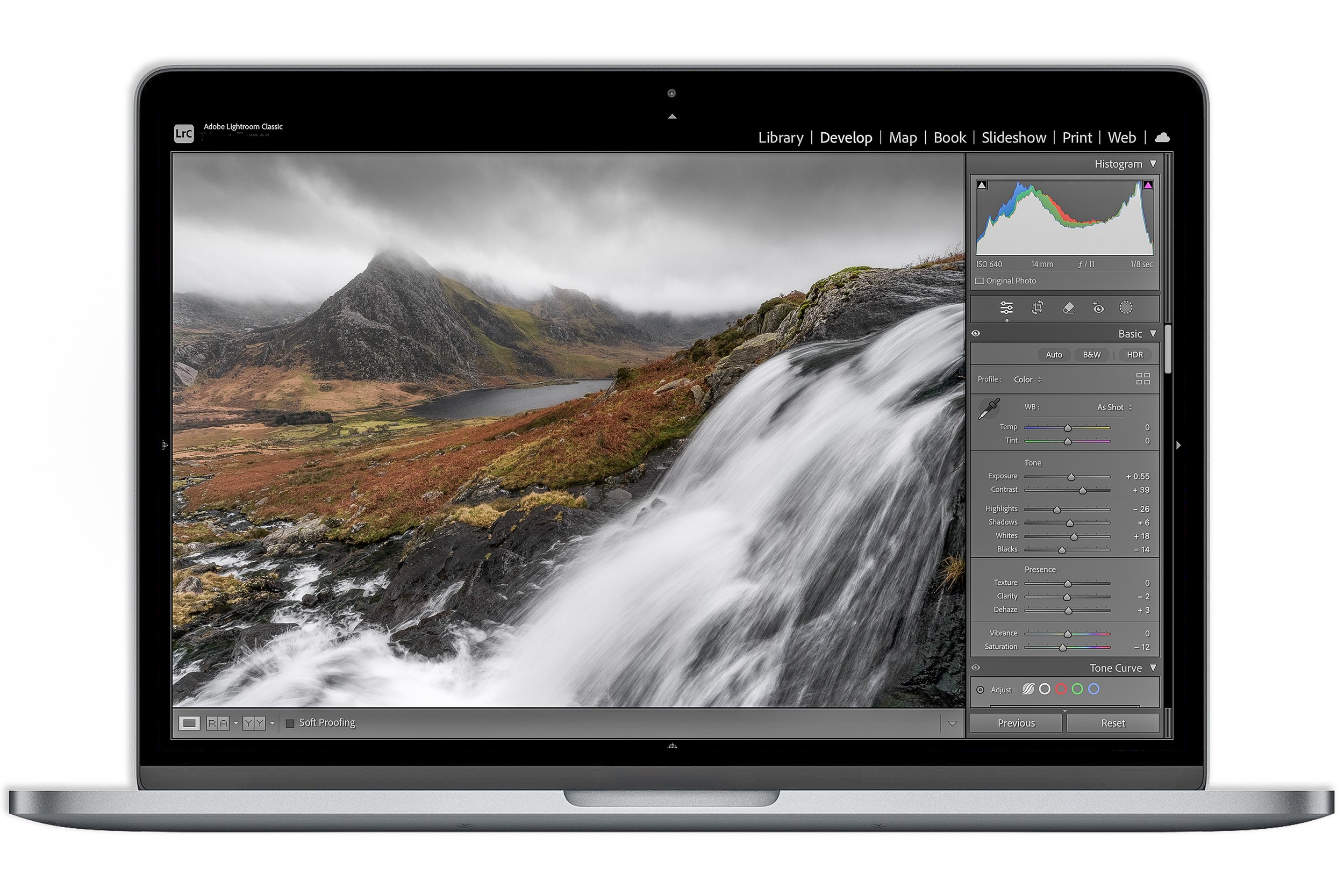How to Use a Wide Angle Lens for Landscape Photography: The Ultimate Guide
Beginner Tips for Getting Better Wide Angle Landscape Photos
Wide angle lenses can be amazing. They show scale. They capture drama. They fit in everything you see and more.
But if you’re not careful, they can also make your photos feel empty. Or flat. Or just a bit chaotic.
So let’s break it down.
In this blog I’ll show you exactly how to use a wide angle lens for landscape photography. I’ll share tips I wish I’d known earlier. I’ll explain where people go wrong. And most of all, I’ll help you start making images that feel full of depth and impact.
Learning how to properly use a wide angle lens for landscape photography can seriously transform your images.
Let’s get into it.
Getting close to some foreground with my wide angle lens. Check out my gear that I use for landscape photography.
Why Wide Angle Shots Often Fall Flat
It’s tempting, isn’t it? You see a huge view. You pull out the wide angle lens. You want to capture all of it. Every inch.
But here’s the thing. That doesn’t always work.
When everything is in the frame, nothing stands out. You end up with a scene that’s technically wide, but emotionally hollow. It doesn’t feel like what it felt like to be there.
Here’s a quote I come back to all the time:
— “Don’t photograph what you see. Photograph what you feel.”
The key to using a wide angle lens for landscape photography isn’t just about fitting everything in. It’s about creating layers. It’s about guiding the viewer through the frame.
You want depth. Foreground. Midground. Background. The whole lot.
That’s what gives a photo its pull. That’s what makes someone stop and stare.
In the next section, I’ll show you how to build that depth step by step.
Without the deliberate inclusion of foreground and midground, this image would feel very flat. Swirl How, Lake District.
Foreground First
If there’s one thing to remember when using a wide angle lens for landscape photography, it’s this:
Start with the foreground.
Most people point their camera at a great view. But with a wide lens, the background shrinks. All that drama in the distance gets smaller than you expect.
So you need something up close to anchor the frame. Rocks. Grass. A path. A puddle. Anything that gives the image a starting point.
Think of it like this. Your foreground is the doorway. It’s how people enter the photograph.
From there, you can lead them through. Midground. Background. Sky.
No strong foreground? No strong photo.
That’s the hard truth with wide angle photography. And it’s the thing that trips up so many beginners.
So next time you’re out, don’t just look ahead. Look down. What’s by your feet? What can you use?
That’s where your best wide angle shots begin.
I spent ages faffing about on top of Sheffield Pike, trying to find foreground that matched the snowy backdrop. Eventually I landed on some rocks with just the right texture. Their shape and direction pulled the whole scene together.. Taken with the Nikon Z7 & Nikon 14-30mm.
Fit the Pieces Together
Once you’ve found a good foreground, the next step is to build around it. This is where the composition really starts to take shape.
Ask yourself questions. Does the midground connect well with the foreground? Is there a line or a shape that leads into the distance?
What about the background? Does it balance the frame? Or is it pulling attention away from the subject?
Using a wide angle lens for landscape photography is a bit like solving a puzzle. You’ve got all the pieces. But they need to fit just right.
And the best compositions? They feel effortless. Like everything is exactly where it’s meant to be.
That only happens when you slow down. Move around. Try different angles. Adjust small things. Step a little to the left. Kneel down. Raise the tripod.
You’ve already done the hard part by finding a subject and a strong foreground. Now just give it the time it needs to come together.
That’s what turns a decent photo into a great one.
If you’re looking for more ideas on how to spot natural balance and structure in a scene, I’d recommend checking out my eBook on composition in landscape photography.
The foreground rock, midground heather and distant mountains were all placed deliberately. It was just a case of slowing down and making sure everything worked together in the frame. Taken with the OM System OM-5 & Panasonic Leica 9mm.
Use Light to Lead the Eye
Once your scene is set, there’s one more element that can take your wide angle landscapes to another level.
Light.
The way light hits the landscape changes everything. It shapes the scene. It adds mood. It draws the eye.
So start paying attention to how the light falls on your composition. Are there highlights on the rocks in the foreground? Is the background catching a break in the clouds?
These small details can make a big difference. They give the image rhythm. They guide the viewer’s eye through the frame.
Early morning or late afternoon light tends to work best. It’s softer. More directional. And often more colourful too.
But even on grey days, you can find moments where the light shifts for a second and transforms the whole scene. Be ready for those.
The best wide angle landscape photographs use every tool they can. Composition. Foreground. Depth. And of course, light.
Bring them all together, and your images will not only look wider. They’ll feel deeper too.
Never forget the light. Use it to your advantage. I deliberately shot straight into the sun here in North Yorkshire to make the whole image feel more dramatic.
Avoid the Everything Shot
As we touched on before, this is where so many people go wrong with wide angle lenses. You see an amazing scene. You panic. You want to capture everything. So you do.
But in doing that, you lose what made the moment special.
Wide angle lenses are not about capturing it all. They’re about choosing the right parts. You still need a story. A focus. A reason for someone to stop scrolling and look closer.
Instead of trying to photograph the entire view, ask yourself: what’s the one thing I want people to notice? What’s the moment? What’s the mood?
Then cut the rest.
Resist the urge to include too much sky. Or too many elements. Keep it clean. Keep it strong.
Less chaos. More clarity.
That’s the mindset shift that transforms your wide angle landscapes.
Everything has been positioned on purpose, almost like imaging it as a ‘live, real-life jigsaw’. OM System OM-5 & Panasonic Leica 9mm.
Keep It Level
This one’s easy to overlook, but it matters a lot.
When you’re using a wide angle lens for landscape photography, even the tiniest tilt of the camera can completely throw off your shot. The lens exaggerates lines and curves. So if your horizon’s off by just a few degrees, it can make the whole photo feel unbalanced.
Use the in-camera level if your camera has one. Or switch on the grid lines. Take that extra second to double check. It’s worth it.
And it’s not just about horizons. If you’ve got trees or buildings in the frame, they’ll lean and warp if the angle is off. That might be the look you’re after, but more often than not, it’s just distracting.
A level frame keeps the scene feeling grounded. Solid. Real.
It lets the composition do the talking.
Watch the Edges
It’s easy to get so caught up in the scene that you forget what’s happening around the edges of your frame.
But with a wide angle lens, the edges matter more than ever. They stretch. They distort. And if you’re not careful, they can pull the viewer’s attention in directions you don’t want.
So after you’ve composed your shot, take a moment to scan the edges. Is there a branch poking in? A bright patch of sky that draws the eye away?
Tidy them up. Reframe. Or shift your position slightly to clean up the borders.
A great wide angle photograph feels balanced. Everything belongs. Nothing is accidentally creeping in from the sides.
It’s a small detail. But small details make strong images.
Speaking of detail, if you’d like to learn how to get pin-sharp image quality every time you take a photo, check out my completely free 15-page pdf guide on how to get sharp photos.
I kept a close eye on the edges of the frame to avoid any distractions sneaking in. The warm foreground light was deliberate too. It helped contrast with the shadowy black mountains in the distance. Elgol, Scotland.
Final Thoughts
Learning how to use a wide angle lens for landscape photography takes time. It’s not just about the gear. It’s about how you see.
The best results come when you slow down. When you build your composition piece by piece. When you pay attention to light and shape and story.
So keep practising. Keep experimenting. And most of all, keep enjoying the process.
If you’re after more help with technique, composition or gear, I’d recommend checking out my blog on The 5 Camera Settings I Always Change on a New Camera (And Why You Should Too). It’s packed with practical ideas that can help you feel more in control of your camera.
Thanks for reading, now get out there and make some photos!
Popular posts:















